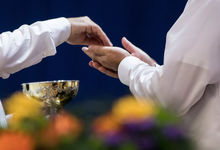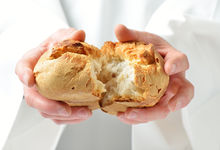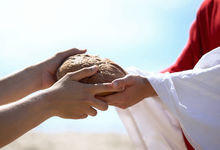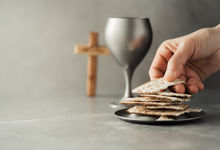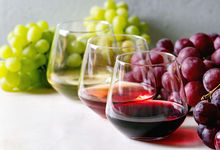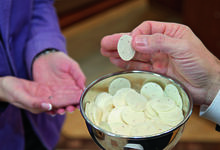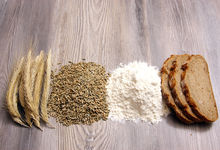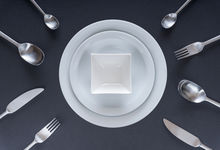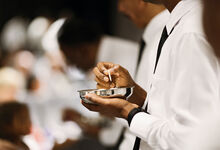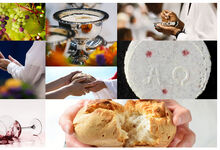The sacraments (24): From Last Supper to Holy Communion
Breaking of bread, Eucharist, altar sacrament: these are not merely three designations for Holy Communion. These terms also outline the path which the celebration took in its early days: away from the familiar evening meal and toward its place in church service.
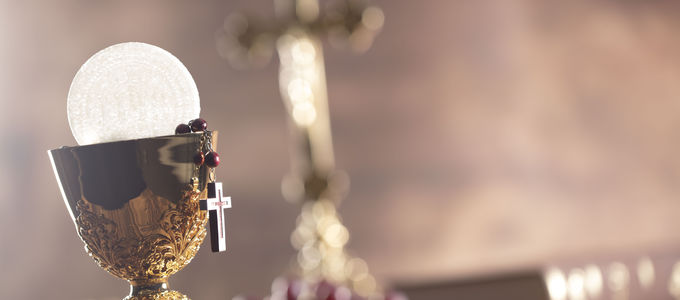
The notion of a divine service was only familiar to some of the early Christians, namely those with a Jewish background who used to participate in synagogue services—and even continued to do so for a time. The closest events familiar to their fellow Christians in the rest of the world—which was dominated by Greek culture—were the “mystery plays” (or the Eleusinian Mysteries), but Christians tended to stay away from these.
A meal that creates fellowship
Nevertheless, the scattered group of small house churches engaged in a special practice that helped them establish an identity of their own: as part of the main evening meal, the Christians assembled around the table would pause for a moment, break bread, and solemnly distribute the bread to each person. In some places, a wine goblet would also be passed around, during which time the participants would commemorate their Lord Jesus Christ wherever they were. This practice was known as the “breaking of bread”.
The gospels and the letters of the Apostles did not provide much specific information about what form these solemn moments should take. Thus it was left to the leaders of the house churches to come up with a dignified framework for the practice. As a result, they incorporated a wide array of different cultural elements, expressions, hymns, and actions from their respective countries. And so at first there were many different forms of what we call Holy Communion today.
New place, new time, new focus
Times changed and the congregations grew. The members of the congregations no longer saw one another at home every day, but rather only on Sundays in their meeting places: not on the seventh, but on the first day of the Jewish week—in order to commemorate the resurrection of Jesus Christ on that day. It was for this reason that this day was also designated as the Lord's Day.
Sociable table fellowship was still maintained, but the commemorative element slowly came to be separated from the communal dinner. Hymns, readings, and speeches began to take on more and more of the focus. The most important of these was the prayer of thanks. During this phase, the most common name for the entire celebration (that is, the Eucharist) derives from the Greek word eucharistia, which means “thanksgiving”.
From partaking to perceiving
The growth of the church soon reached a new dimension: Christianity had become the state religion. By now the congregations had begun to gather in the mornings and had long ceased to assemble in the private settings of their house congregations. They now gathered in the ever expanding context of specially built churches.
The celebration of the Lord’s Supper thus began to lose its original character of a table fellowship and soon came to be known as the sacramentum altaris (altar sacrament). It eventually developed into an event that was increasingly celebrated at the altar in front of the assembled congregation. Participation soon gave way to perception—or looking on. The form of the celebration was soon subjected to specific standards, and the divine service came to follow the liturgy.
More practical than theological
It is in this way that the path from Last Supper to Holy Communion unfolded over the first four centuries. The transition can be traced from sources such as the New Testament (Acts, 1 Corinthians), the early church orders (the Didache, Traditio Apostolica) and the writings of the early Church Fathers (Justin, Irenaeus).
An interesting note: the development of the sacrament in antiquity resulted more from practical considerations than theological ones. It only became truly theological in the transition to the medieval period. And even that did not occur without some controversy. That will be the focus of the next article in this series.
Photo: zolnierek - stock.adobe.com



